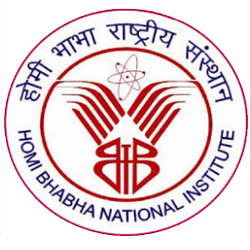

Homi Bhabha National Institute
Mumbai, Maharashtra
The Homi Bhabha National Institute (HBNI) was established in 2005 as a deemed-to-be university under the Department of Atomic Energy (DAE), Government of India. It is named after Dr. Homi Jehangir Bhabha, the father of India’s nuclear program.
The institute was envisioned as a hub to integrate academic programs with advanced research across various institutions under the DAE. Its formation brought together a group of premier national research centers and academic institutes, creating a synergistic ecosystem for science and engineering education in India, especially in nuclear science and technology.
Some of the constituent institutions under HBNI include:
Bhabha Atomic Research Centre (BARC), Mumbai
Indira Gandhi Centre for Atomic Research (IGCAR), Kalpakkam
Raja Ramanna Centre for Advanced Technology (RRCAT), Indore
Variable Energy Cyclotron Centre (VECC), Kolkata
Institute for Plasma Research (IPR), Gandhinagar
Saha Institute of Nuclear Physics (SINP), Kolkata
Tata Memorial Centre (TMC), Mumbai
Facilities
Being a decentralized university, HBNI benefits from the infrastructure of its constituent institutions, which are world-class research facilities. Some highlights include:
State-of-the-art laboratories and research reactors (e.g., Dhruva and CIRUS reactors at BARC)
Particle accelerators and synchrotron radiation sources at RRCAT
Nuclear fuel cycle research and fast breeder reactor development at IGCAR
Advanced cancer treatment and research facilities at Tata Memorial Centre
Fusion research including Tokamak experiments at IPR
High-performance computing clusters, specialized instrumentation, and clean rooms
Library networks, digital resources, and access to international journals
Residential campuses with hostels, sports facilities, and cultural centers
HBNI also promotes doctoral and post-doctoral research, with a focus on multidisciplinary areas like physics, chemistry, biology, engineering, and health sciences.
Reputation
HBNI holds a prestigious position in India’s higher education and research landscape, especially in the field of nuclear science, engineering, and health sciences. It is unique in that:
It is closely tied to India’s strategic and scientific goals, particularly in nuclear energy and defense.
Researchers and students get to work alongside top scientists and access cutting-edge research environments.
It has produced a large number of PhDs and research publications in highly specialized areas.
The faculty includes distinguished scientists, many of whom are fellows of national academies and recipients of national awards.
